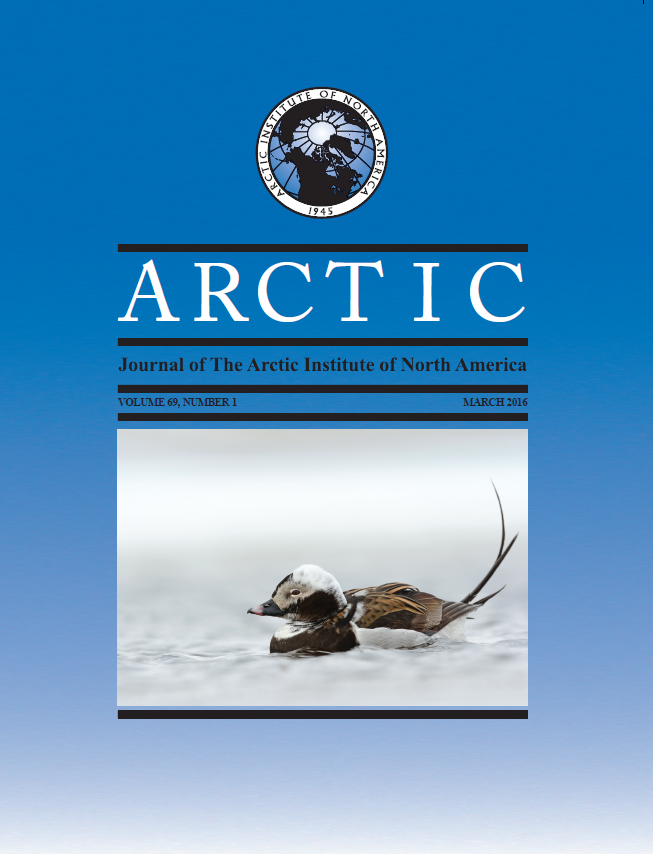The Pembroke Site: Thule Inuit Migrants on Southern Victoria Island
DOI:
https://doi.org/10.14430/arctic4545Keywords:
archaeology, Thule, Inuit, migration, Nunavut, zooarchaeologyAbstract
This paper presents description and interpretation of the Pembroke site, the earliest known Thule Inuit occupation in the southeastern Victoria Island region, Nunavut. The site has 11 extant dwellings, including five heavy tent rings, five light semi-subterranean dwellings, and a qalgiq (large communal structure). The site’s economy revolved mainly around the acquisition of caribou, Arctic char, and lake trout, with minimal consumption of sea mammals. Radiocarbon dates, reinforced by artifact analyses, indicate an occupation around AD 1400. Based on several lines of evidence, including the extremely small artifact samples, the site is interpreted as having been occupied relatively briefly. It represents the first colonization of the region by Thule people, approximately 200 years after the initial Thule migration from Alaska into the eastern Arctic. Thus, it documents a second migration wave: an expansion of Thule peoples from their initially occupied territories to other, in some ways less optimal, regionsDownloads
Download data is not yet available.


